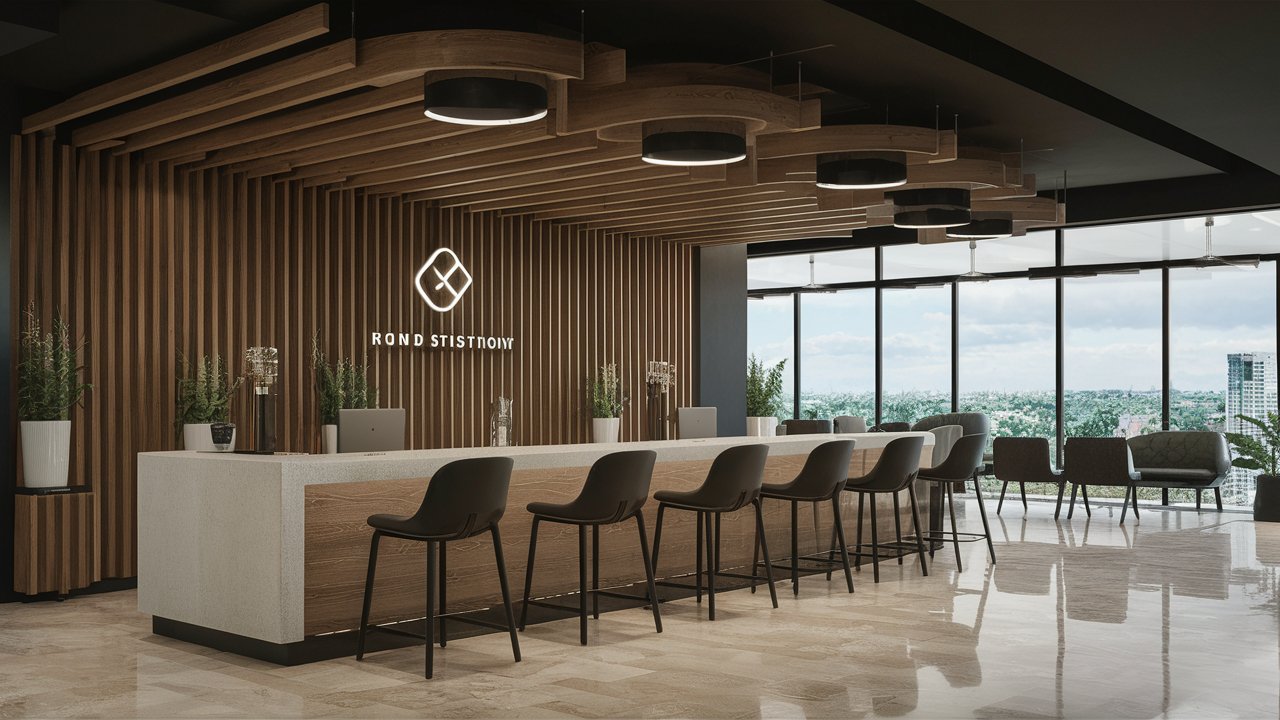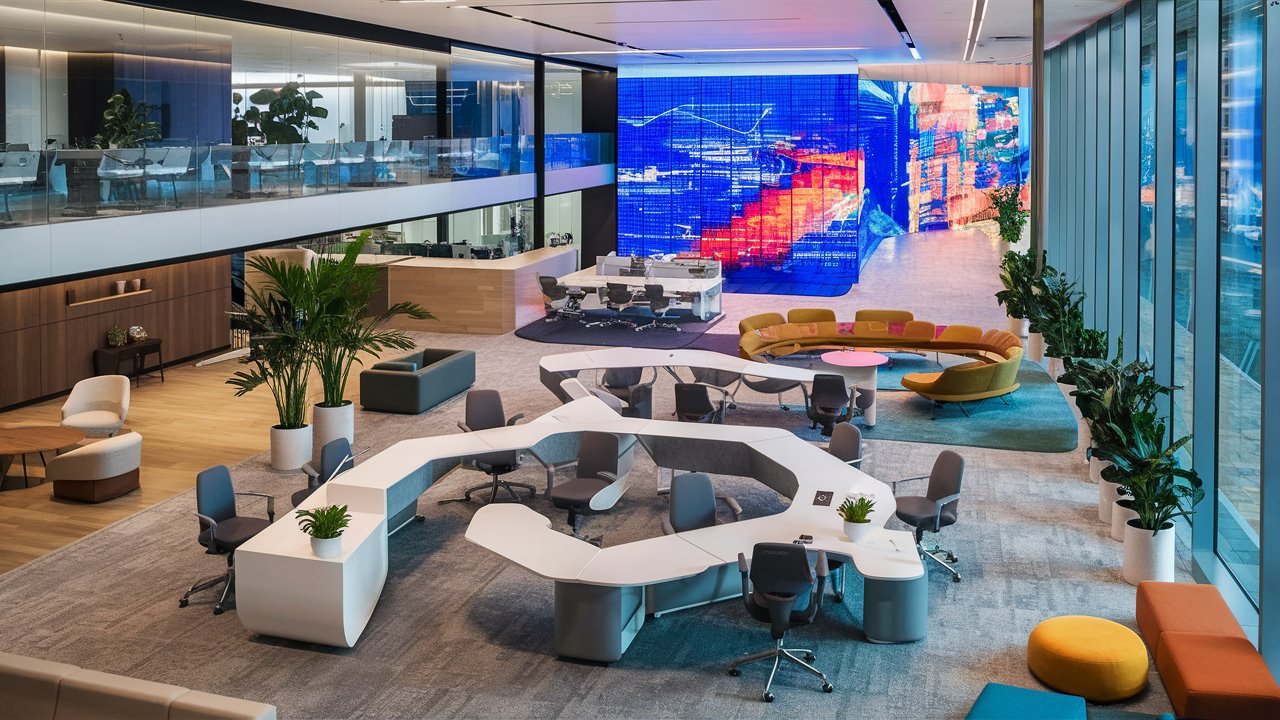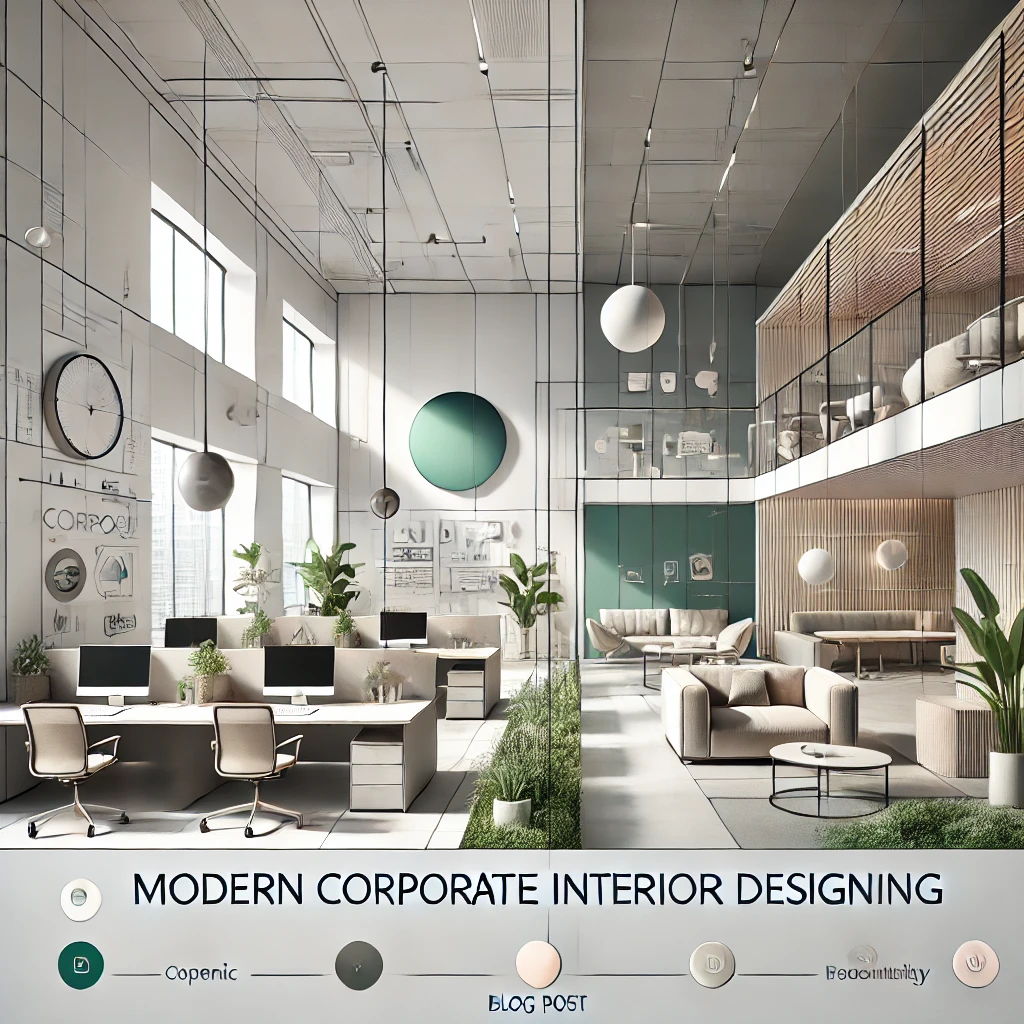The Evolution of Modern Corporate Interior Designing
In today’s fast-paced business environment, Corporate Interior Designing has evolved from being merely about functionality to becoming a sophisticated blend of aesthetics, culture, and productivity. Modern Corporate Interior Designing is no longer limited to just placing desks and cubicles; it’s about creating dynamic environments that foster collaboration, innovation, and employee well-being. This evolution in Corporate Interior Designing reflects broader shifts in how we work and live, driven by technological advancements, changing cultural norms, and the growing recognition of the importance of workplace design in business success.
The Early Days: Function Over Form in Corporate Interior Designing

In the early stages of Interior Designing, the focus was primarily on functionality. Offices were designed with an emphasis on space efficiency, often at the cost of aesthetics and employee comfort. The standard Interior Designing approach featured rows of identical desks in drab, uninspiring settings. The design philosophy of this era was to create layouts that facilitated supervision and control, with managers in enclosed offices and employees in open spaces.
This early approach to Corporate Interior Designing was a reflection of the industrial mindset of the time, where workers were viewed as cogs in a machine. The primary objective of Interior Designing was to ensure that employees could perform their tasks with minimal distraction. However, this led to work environments that were often sterile and uninspiring, negatively impacting employee morale and productivity.
The Open-Plan Revolution in Corporate Interior Designing
The 1960s and 70s marked a significant shift in Corporate Interior Designing with the introduction of the open-plan office. This period saw a growing awareness of the psychological impact of the workplace on employees, leading designers to explore layouts that promoted interaction and collaboration. The open-plan office was born out of a desire to break down traditional office hierarchies and create a more democratic work environment.
While this new approach to promised increased collaboration and a more egalitarian workplace, it also brought challenges. The lack of privacy and increased noise levels in open-plan offices often led to employee dissatisfaction. Despite these issues, the open-plan concept especially in creative industries where collaboration was key.
The Rise of the Tech Industry: A New Paradigm in Corporate Interior Designing
The tech boom of the late 20th and early 21st centuries brought about another major evolution. Tech giants like Google, Apple, and Facebook revolutionized the workplace by introducing Interior Designing concepts that prioritized creativity, innovation, and employee well-being. These companies recognized that a well-designed office could be a powerful tool for attracting and retaining talent, as well as fostering a culture of innovation.
These tech companies pioneered the idea that Corporate Interior Designing should support a variety of work styles and needs. This approach led to the development of flexible workspaces, featuring a mix of open areas, private offices, and collaborative spaces. The emphasis in this new era of Interior Designing was on creating environments that were not only functional but also inspiring, with features like ergonomic furniture, natural lighting, and vibrant colors.
In these new corporate spaces, It began to blur the lines between work and leisure. Amenities such as game rooms, fitness centers, and nap pods became common, reflecting the belief that a happy and healthy workforce is a productive one. This holistic approach to Interior Designing marked a significant departure from the purely functional designs of the past.
The Modern Corporate Interior Designing: A Focus on Flexibility and Well-Being

In recent years, Interior Designing has been shaped by several key trends, with flexibility and employee well-being at the forefront. The rise of remote work and the gig economy has led to a demand for more adaptable office spaces. Companies are increasingly adopting flexible Corporate Interior Designing layouts that can be easily reconfigured to meet changing needs, such as hot-desking, modular furniture, and multi-purpose rooms.
Employee well-being has also become a central concern in modern Corporate Interior Designing. The COVID-19 pandemic underscored the importance of health and safety in the workplace, leading to innovations in air quality, sanitation, and space utilization. Designers are now focusing on Corporate Interior Designing that supports both physical and mental health, incorporating elements like biophilic design, which brings nature into the workplace, and wellness rooms for relaxation and stress relief.
Sustainability is another critical factor in the evolution of modern Corporate Interior Designing. With growing awareness of environmental issues, companies are seeking to minimize their carbon footprint through the use of eco-friendly materials, energy-efficient systems, and sustainable practices. Modern Interior Designing is not just about creating a workspace; it’s about reflecting a company’s values and commitment to social responsibility.
Technology’s Role in Shaping the Future of Corporate Interior Designing
Technology continues to play a pivotal role in the evolution. The integration of smart technology into office spaces has transformed the way employees interact with their environment. From automated lighting and climate control systems to advanced communication tools, technology is enhancing both the functionality and comfort of modern offices through innovative Interior Designing.
The rise of the Internet of Things (IoT) is allowing companies to create “smart offices” that adapt to the needs of their users in real-time, showcasing the latest in Corporate Interior Designing. For example, sensors can monitor occupancy levels and adjust lighting and temperature accordingly, improving energy efficiency and creating a more comfortable work environment. Virtual and augmented reality are also being used to design and visualize office spaces, taking to new heights of efficiency and customization.
As we look to the future, the role of technology in Interior Designing is likely to expand, with innovations such as AI-driven design tools and immersive virtual workplaces becoming more common. These advancements will continue to push the boundaries of what is possible in creating environments that are not only functional and aesthetically pleasing but also highly personalized and adaptive.
Conclusion
The evolution of Interior Designing reflects broader changes in the way we work, live, and interact with our environments. From the rigid, function-focused offices of the past to the flexible, employee-centric spaces of today, Interior Designing has undergone a dramatic transformation.
As businesses continue to adapt to new challenges and opportunities, the importance of thoughtful, innovative Corporate Interior Designing will only grow. The future of Interior Designing lies in creating spaces that are not only beautiful and functional but also adaptable, sustainable, and supportive of employee well-being. By embracing these principles, companies can create work environments that not only reflect their brand and culture but also drive success in an ever-changing world.
In the end, modern Interior Designing is about more than just creating a space where work happens – it’s about designing a place where people thrive. As the workplace continues to evolve, so too will the role of Corporate Interior Designing in shaping the future of work.


